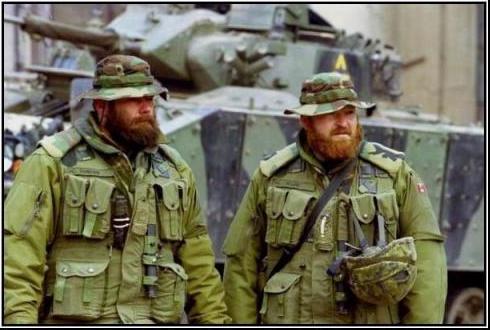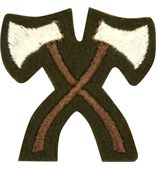CVFR LRRP decided to take its nickname, Pioneer Crew, from the tradition of the Assault Pioneer. These tough, independent soldiers are used to clear the way for assaulting infantry. Given the Pioneer Crew's unique role within the CVFR, to act as a spearhead and clear the way for the growth of CVFR across the country, it was thought that this was an appropriate metaphore. Assault Pioneers are lineal descendents of the Pioneers who have formed an essential part of armies since at least the time of the Roman legions. These pioneers were normally employed to march in front of the advancing army, clearing the route as necessary. They could also construct defenses and bivouac facilities. More recently (since the Second World War) assault pioneers have normally formed a Platoon in infantry battalions, and such platoons can be found in a number of British Army and Commonwealth infantry units. In some of these armies, soldiers serving in the Assault Pioneer Platoon can be identified by a specialist skill badge of two crossed felling axes sewn on their uniforms. These felling axes have traditionally been iconic of the pioneer in various armies throughout history.  |
 The wearing of beards by Assault Pioneers has also been a traditional practice at various times in infantry battalions of British and Commonwealth armies, such as those of Australia and Canada. This tradition began in the French Army (possibly in Napoleonic times) and was one of the dress practices adopted by the British after their defeat of Napoleon in 1815 (along with the Foot Guards bearskin headress). In the Australian, Canadian and New Zealand armies, on special occasions some battalions may still parade a ceremonial detachment of assault pioneers in historical uniforms wearing leather aprons, gauntlets and gaiters, and carrying the various tools of their trade such as felling axes, crosscut saws, hatchets and billhooks, picks and shovels. |
|
Assault Pioneers do not replace Combat Engineers: the latter have a much greater range of skills, capabilities and resources. Instead, Assault Pioneers are intended to provide the infantry battalion with its own integral ("organic") light engineering support in the same sense as the Mortar Platoon provides the same battalion with its own 'organic' indirect fire support. This organic support permits the infantry battalion to conduct operations effectively without relying on the external support of Combat Engineers who are normally subject to a demanding list of priority tasks across the battlefield. On operations Assault Pioneers often work separately in small detachments providing specialist skills, tools and advice to the infantry companies and platoons with those sub-units providing the bulk of the labour. The term 'Assault Pioneer' reflects the tradition (arising in the First and Second World Wars) of employing these soldiers in the first wave of assaults on fortified enemy positions, using their skills and equipment to support the attacking force in crossing and breaching the enemy's defenses. While Assault Pioneers normally function in a specialist role, they are infantry soldiers first and are fully capable of engaging in combat as needed. |
||